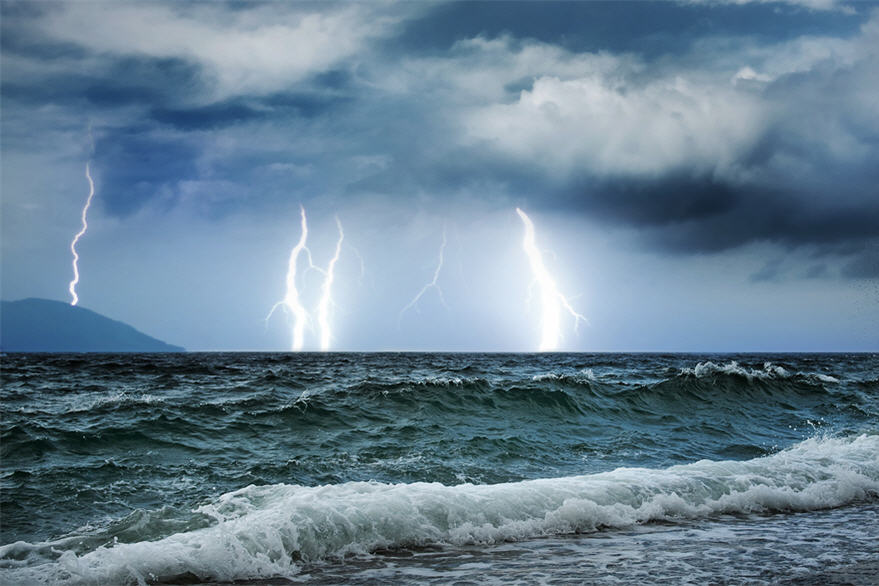Wasp Cumbria News Update August 2013
September 19, 2013
The first series of trials for our larger scale Prototype completed between the 12th and 17th June.
Workshop 025
Floatation Unit, approximately 6M x 5M x 2M, and Turbine safely moored in Walney Channel ready for the Trials of our larger scale Tidal Turbine Project.
Assembly of the Floatation Unit, which supported the Turbine, Generator and all Electrical components, commenced on the 11th June following delivery from Lancaster University and was completed by lunchtime the following day together with the Turbine ready for a traditional Naming and Launching ceremony prior to lowering into Walney Channel.
Bay Towage and Salvage towed The Rig onto one of their existing moorings in Walney Channel with a second mooring being placed once the Floatation Unit had aligned with the Flow direction. For security and in order to monitor output and various other important data such as RPM, Flow, Power and Battery state, a Data Logger was installed enabling a continual readout to be downloaded throughout the duration of the Trials.
Unfortunately within 24 hours it became apparent from the downloaded data that there was a problem when some of the key data was not registering and battery power was failing which in turn compromised the Navigation Lights creating a possible Navigational hazard. The gearbox had been designed with two output shafts and it was felt that changing the drive to the Generator onto the second output shaft would improve the performance. In the interest of Safety it was decided that the adjustments would be best carried out within the Barrow Dock System. Due to time constraints it was decided to test this modification within the Dock system where Bay Towage and Salvage kindly agreed to tow the Floatation Unit on a number of runs within the Dock System at a speed to replicate the Tidal Flow. Data was now being transmitted and it was possible to access the information on a Mobile Phone in real time during this exercise and whilst the power output was less than predicted it nevertheless provided WASP with a positive outcome to the Project.
Despite the disappointment of not achieving the results that we, WASP and the Team of Final year students from Lancaster University, had hoped for there were many positives that we can draw from the Trials. Given the Data that was obtained we have been and able to look at the areas that we can improve on in order to try and achieve the predicted results in a future set of Trials.
WASP now has a proven Floatation unit which by design is not only portable but can easily be adapted to suit a range of Turbine designs and as such will be invaluable as we move forward. The Data Logging System was a valuable addition to the Trials and will certainly be adopted in future Trials. Whilst we refine the existing Turbine and Drive system we will be developing a second innovative Turbine and Generator as well as looking into a hydraulic drive system.
A further series of Trials are being planned for 2014 where we hope to be able to deploy both our modified Turbine and the new Design.
The Floatation Unit and equipment has been made available to Lancaster University for their own use in developing and testing other Tidal Flow Renewable Energy designs.
Perhaps the most positive outcome of the Project has been the relationship between WASP(CUMBRIA)LIMITED and Lancaster University.
From our initial meetings with the University in 2011and 2012 WASP benefited from a short study, based on our original small scale ‘Proof of Concept’ trials, which subsequently developed into a comprehensive package where eight Students worked on the development of the larger scale prototype as their final year Project. Under the guidance of Dr Stephen Quayle the students developed a program of work covering all aspects of the Project including meetings with WASP, budget and cash flow forecast, design, small scale testing, manufacture, procurement, assembly, risk assessment, site visit, commissioning, trials, final report and recommendations. The confidence and enthusiasm of the team in challenging various aspects of the original design from day one was very encouraging and without question played a major part in the development of the Project through to the Trials.
The Project was I believe one of the largest scale projects carried out by a group of Students from the University and will hopefully provide a template for the future where more Students can gain a ‘hands on’ experience helping other similar small Companies develop and test their ideas.
As already mentioned in earlier updates we were very fortunate to obtain the ‘Innovation in Business’ Grant supported by Furness Enterprise and the Nuclear Decommissioning Authority which ensured that we were able to develop the project by providing the additional financial support necessary to achieve this.
As Managing Director of WASP(CUMBRIA)LIMITED I look forward to working with the University again in developing other Projects and offering any assistance where possible.
Alan Newton, C Eng, MRINA.
Some of the local Companies involved,
Furness Enterprise and the Nuclear Decommissioning Authority for Grant Assistance,
Lancaster University
AB Ports, Barrow-in-Furness,
Bay Towage and Salvage Company, Barrow-in-Furness.
Duddon Hire, Barrow-in-Furness.
Furness Plastics, Barrow-in-Furness.
CMS, Barrow-in-Furness.
Alan Newton Yachts, Barrow-in-Furness.
Web Profit Solutions, Ulverston

